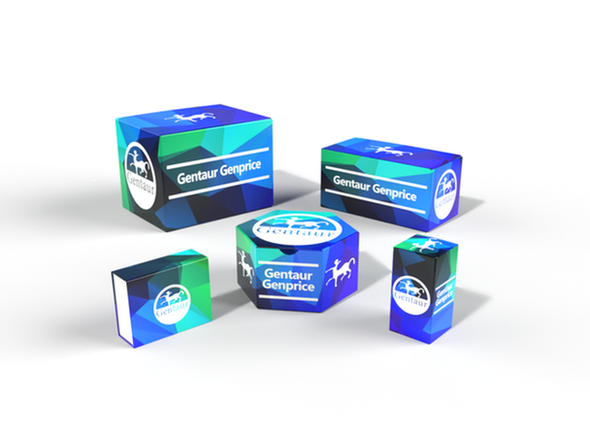Description
CD44 Antibody [HCM15-1] | 33-866 | Gentaur UK, US & Europe Distribution
Host: Mouse
Reactivity: Human, Mouse
Homology: N/A
Immunogen: Purified human protein was used as the immunogen for the CD44 antibody.
Research Area: Signal Transduction, Signal Transduction
Tested Application: Flow, IHC-P
Application: Flow Cytometry: 0.5-1 ug/million cells in 0.1ml
Immunohistochemistry (FFPE) : 1-2 ug/ml for 30 min at RT (1)
Prediluted format: incubate for 30 min at RT (2)
Titering of the CD44 antibody may be required for optimal performance.
1. FFPE testing requires sections to be boiled in pH6 10mM citrate buffer for 10-20 minutes, followed by cooling at RT for 20 minutes, prior to staining.
2. The prediluted format is supplied in a dropper bottle and is optimized for use in IHC. After epitope retrieval step (if required) , drip mAb solution onto the tissue section and incubate at RT for 30 min.
Specificiy: N/A
Positive Control 1: N/A
Positive Control 2: N/A
Positive Control 3: N/A
Positive Control 4: N/A
Positive Control 5: N/A
Positive Control 6: N/A
Molecular Weight: N/A
Validation: N/A
Isoform: N/A
Purification: Protein G affinity chromatography
Clonality: Monoclonal
Clone: HCM15-1
Isotype: IgG1, kappa
Conjugate: Unconjugated
Physical State: Liquid
Buffer: PBS with 0.1 mg/ml BSA and 0.05% sodium azide
Concentration: 0.2 mg/mL
Storage Condition: Aliquot and Store at 2-8˚C. Avoid freez-thaw cycles.
Alternate Name: CD44, CD44 molecule (Indian blood group) , CDW44, CSPG8, ECMR-III, HCELL, HUTCH-I, IN, LHR, MC56, MDU2, MDU3, MIC4, Pgp1, CD44 antigen, GP90 lymphocyte homing/adhesion receptor, Hermes antigen, cell surface glycoprotein CD44, chondroitin sulfate proteoglyc
User Note: Optimal dilutions for each application to be determined by the researcher
BACKGROUND: Receptor for hyaluronic acid (HA) . Mediates cell-cell and cell-matrix interactions through its affinity for HA, and possibly also through its affinity for other ligands such as osteopontin, collagens, and matrix metalloproteinases (MMPs) . Adhesion with HA plays an important role in cell migration, tumor growth and progression. In cancer cells, may play an important role in invadopodia formation. Also involved in lymphocyte activation, recirculation and homing, and in hematopoiesis. Altered expression or dysfunction causes numerous pathogenic phenotypes. Great protein heterogeneity due to numerous alternative splicing and post-translational modification events. Receptor for LGALS9; the interaction enhances binding of SMAD3 to the FOXP3 promoter, leading to up-regulation of FOXP3 expression and increased induced regulatory T (iTreg) cell stability and suppressive function (By similarity) . [UniProt]

![CD44 Antibody [HCM15-1] CD44 Antibody [HCM15-1]](https://cdn11.bigcommerce.com/s-1rdwiq712m/images/stencil/608x608/products/484073/489902/gentaur-genprice__26005.1661610467__29809.1661628092__75433.1661676199__77988.1661684280__64362.1661692443__02085.1662049603__45075.1662119302__91744.1662191540__21580.1662291419__61862.1663498813.png?c=1)
![CD44 Antibody [HCAM/918] CD44 Antibody [HCAM/918]](https://cdn11.bigcommerce.com/s-1rdwiq712m/images/stencil/590x590/products/483761/489590/gentaur-genprice__26005.1661610467__29809.1661628092__75433.1661676199__77988.1661684280__64362.1661692443__02085.1662049603__45075.1662119302__91744.1662191540__21580.1662291419__78389.1663498764.png?c=1)



